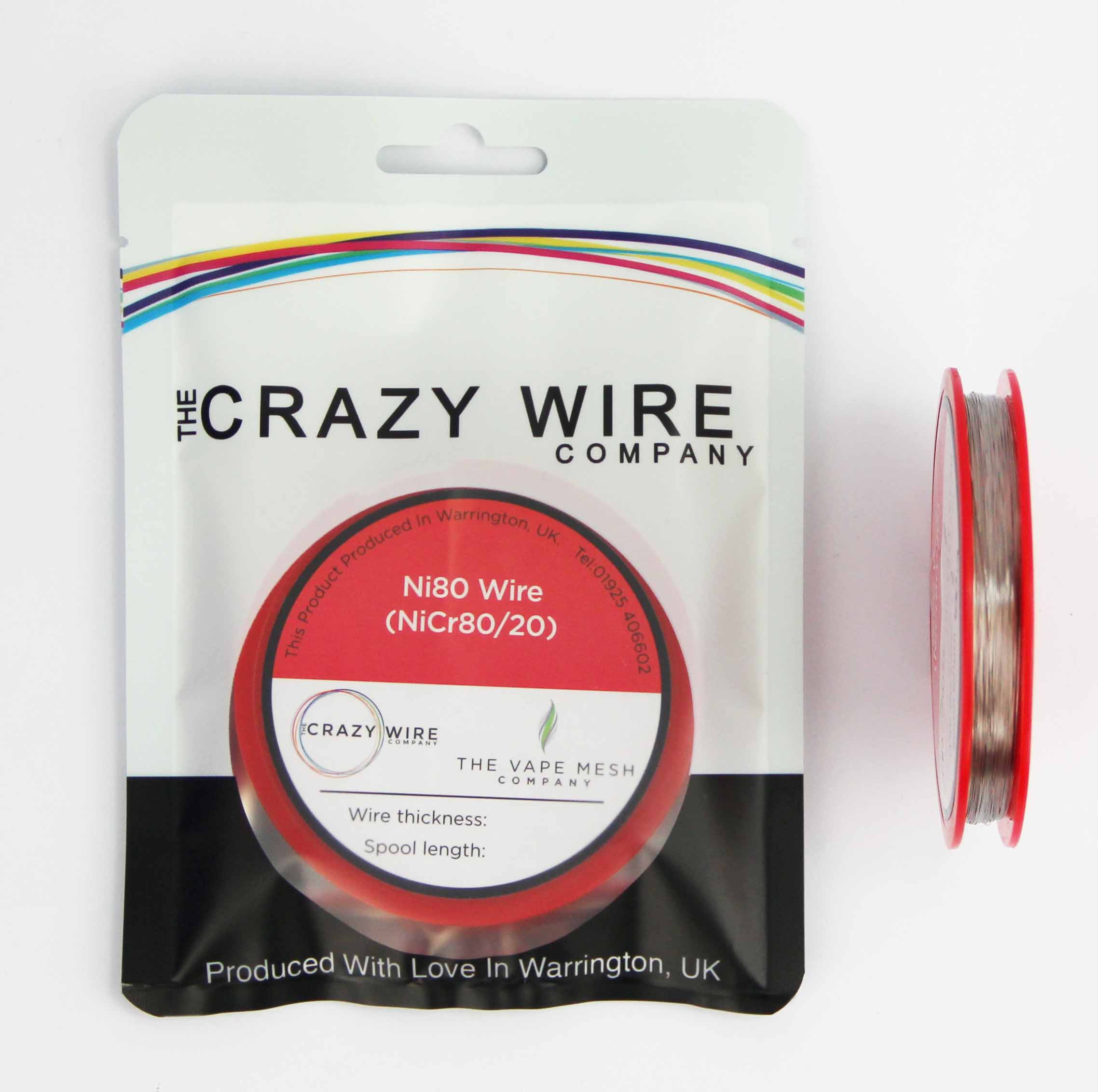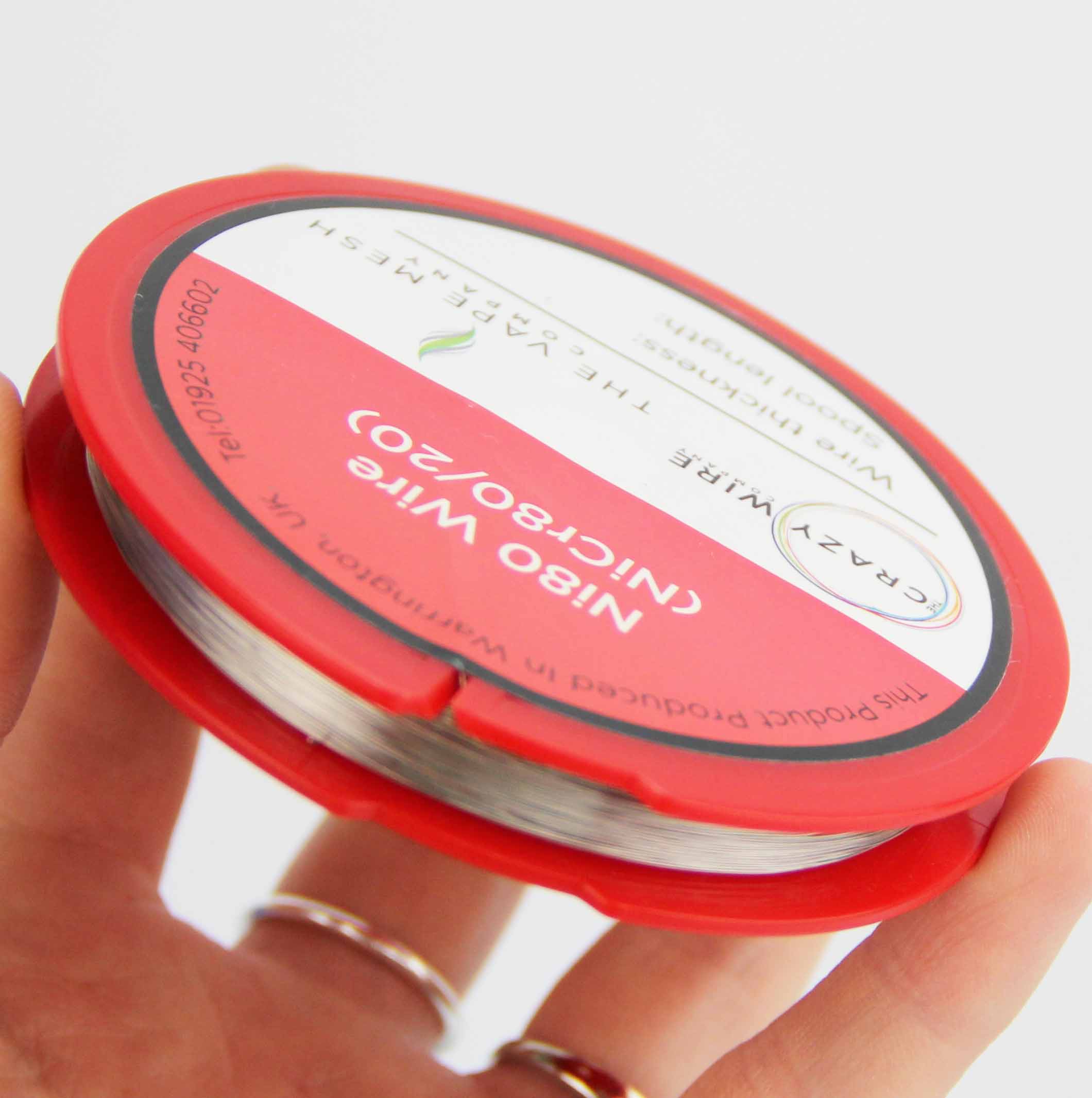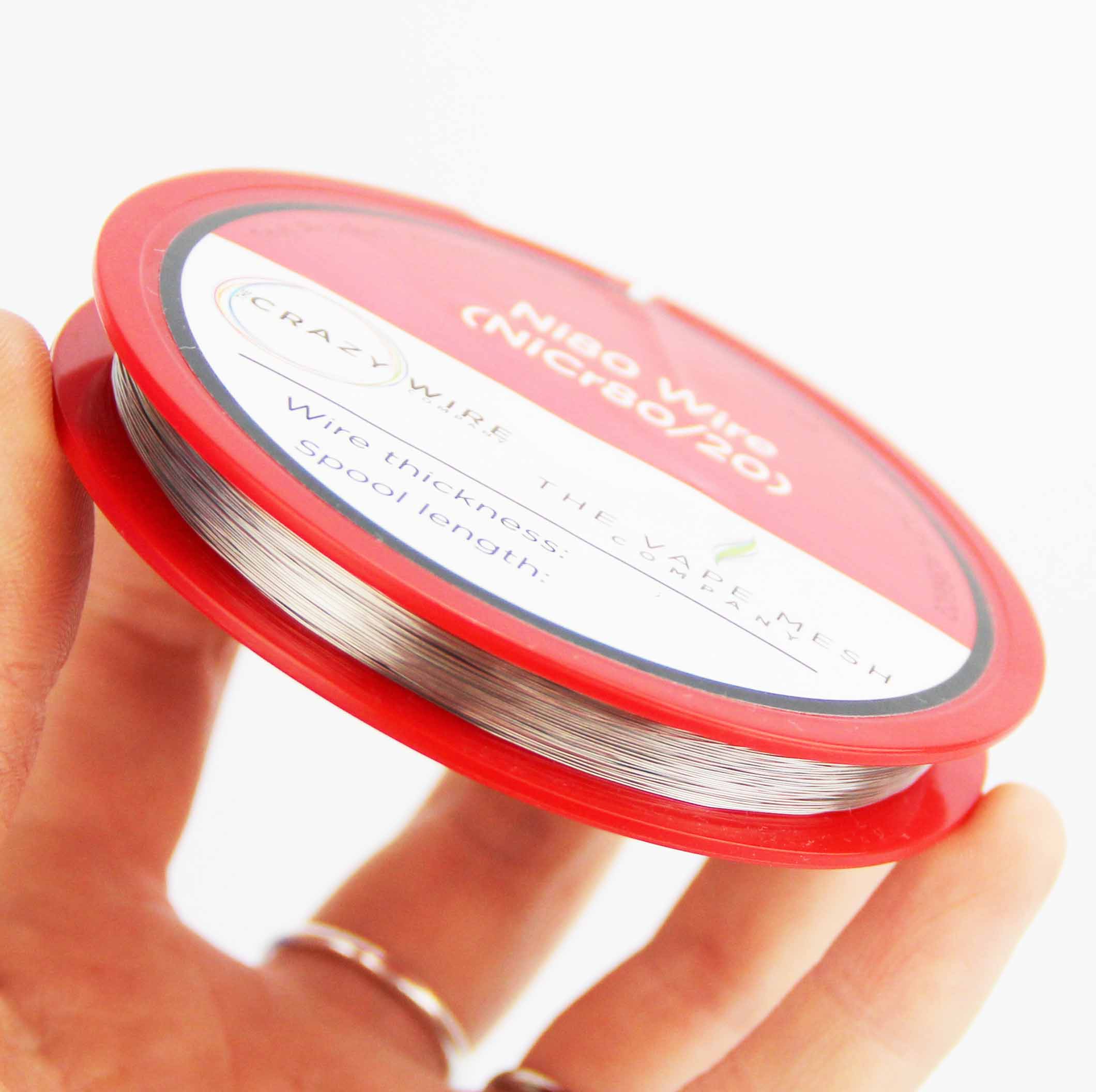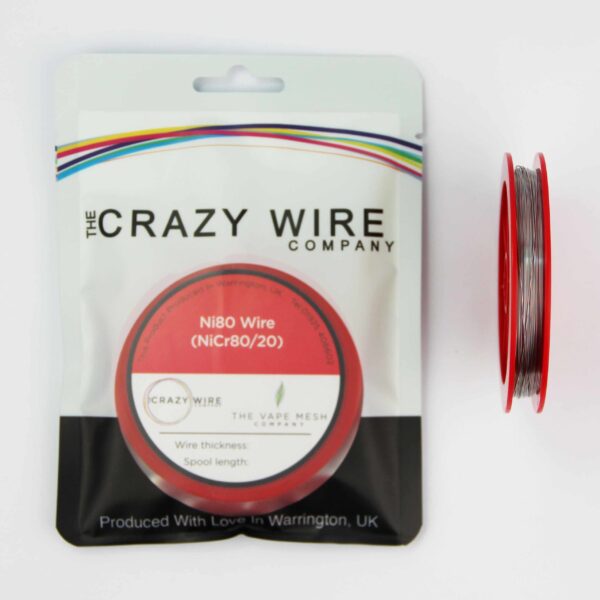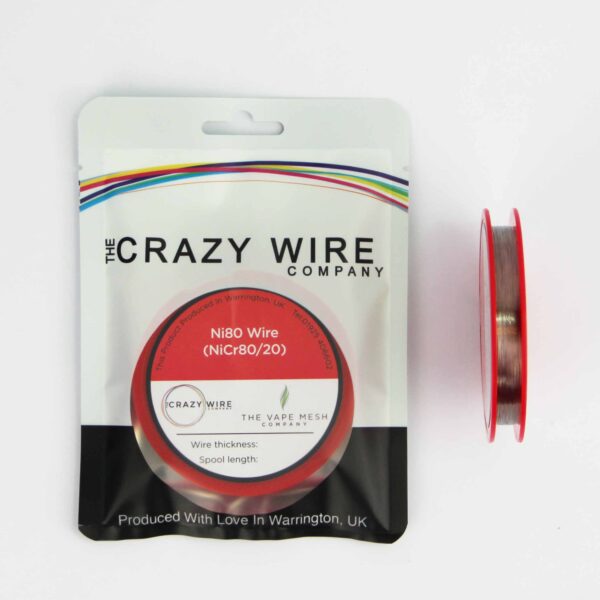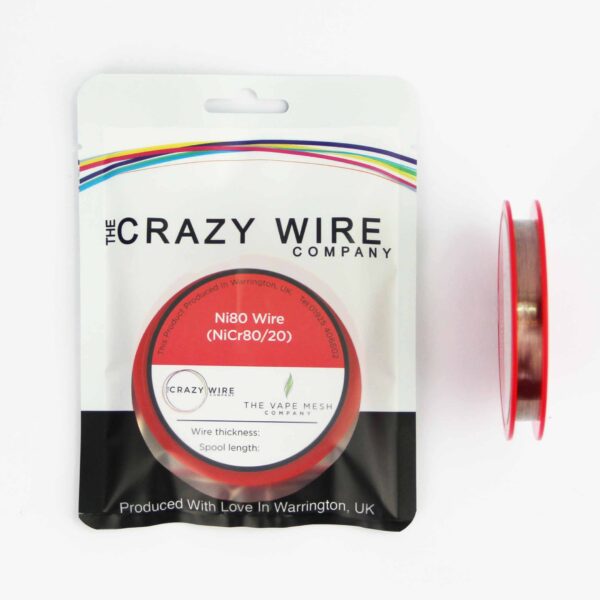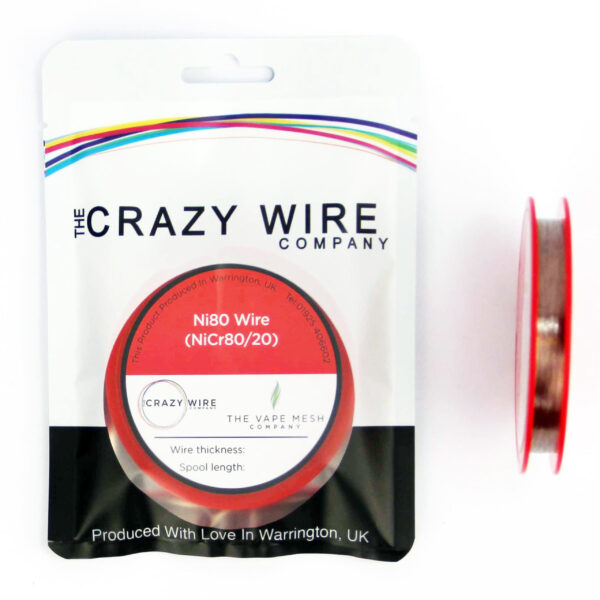Description
0.21mm Ni80 Electrical Resistance Wire
The Crazy Wire Company are well known as suppliers of top quality Ni80 electrical resistance wire. We have enormous stock levels at all times, as we use this wire to weave our high specification woven mesh products. Our brilliant staff are experts in producing our spools of round wire on our 6 rapid action winding machines. All spools are produced to carry a little extra length to make up for any waste when handling the product.
The 0.21mm (32 AWG) Ni80 nichrome electrical resistance wire is a versatile and durable alloy product designed to meet a range of electrical and heating needs. This electrical resistance wire is primarily composed of nickel (80%) and chromium (20%), making it suitable for applications requiring precise electrical resistance. The durability of this product and its resistance to oxidation at elevated temperatures make it a popular choice in many industrial settings. In addition to its uniform resistance, the wire’s flexibility makes it suitable for a wide range of applications.
Electronic users often use this wire to create resistors and other passive components that have consistent resistance values. As a metal that can sustain high temperatures without compromising its structural integrity, this wire has found applications in ceramic heaters, furnaces, and infrared heaters. Ni80 nichrome wire also finds application in specialised laboratories that require consistent and controlled heating. Users also benefit from its long service life and resistance to corrosion, which result in reduced maintenance and replacement costs over time.
0.21mm Nichrome wire refers to a wire made of an alloy of nickel and chromium, with a diameter of 0.21mm. Nichrome is commonly used for its high resistance to corrosion and high electrical resistivity. This makes it ideal for use in applications such as heating elements and resistance wire.
Key product details:
- Diameter – 0.21mm (210 Micron – 32 AWG)
- Ohms/m – 32.33
- Technical Specification:
- Ni – Rest
- Cr – 20.0 – 23.0
- Fe – <1.0
- Max Continuous Service Temp Of Element – 1200
- Micrographic Structure – Austenite
- Magnetic Properties – Nonmagnetic
- Electrical resistance is high
- Corrosion resistance is high
Why Use The Crazy Wire Company
- Quality of products: The Crazy Wire Company always offer high-quality products that meet industry standards and customer expectations.
- Selection: We offer a wide variety of wire products and sizes to meet the diverse needs of our customers. We have more than 600 products available through our site and counting.
- Price: We always offer the best value possible. Our wires are available as part of our major weaving processes, so it is bought at the best possible rate.
- Availability: Our products are kept in house and are ready to ship immediately.
- Customer service: Our experienced staff help our customers feel confident in their purchases and provide assistance when required.
What Else Is Available?
We do not only offer Ni80 round wire. We also have a huge range of KA1 and stainless steel round wire in immediate stock too.
Ribbon wire and flat wire are stocked for immediate dispatch too.
FAQs About This Wire
What Is Electrical Resistance?
Electrical resistance is a measure of a material’s opposition to the flow of electric current. It is defined as the ratio of the voltage applied across a material to the current flowing through it. The unit of electrical resistance is the Ohm (Ω), named after Georg Simon Ohm, who first described this fundamental relationship.
In a conductor, electrons are free to move, so the resistance is low. In an insulator, electrons are not free to move, so the resistance is high. Materials with intermediate resistance are called semi-conductors. The resistance of a material can be influenced by various factors, such as temperature, strain, and composition.
Electrical resistance plays a crucial role in many electrical and electronic applications, from simple resistors in circuits to heating elements and wire-wound resistors. Understanding and controlling the resistance of materials is important in designing and optimizing electrical systems.
How Do I Calculate The Electrical Resistance Of Nichrome Wire?
To calculate the electrical resistance of Nichrome wire, you can use Ohm’s law, which states that the resistance (R) of a wire is equal to the voltage (V) across it divided by the current (I) flowing through it:
R = V / I
However, to use this equation, you need to know the specific resistivity of Nichrome, the length of the wire, and its cross-sectional area.
The electrical resistance of Nichrome can be calculated using the following formula:
R = ρ * L / A
Where:
- ρ (rho) is the resistivity of Nichrome, usually given in units of Ohm-meters
- L is the length of the wire
- A is the cross-sectional area of the wire, usually given in square millimetres (mm^2)
By using the above formula, you can calculate the electrical resistance of a Nichrome wire of a specific length and diameter.
Nichrome vs KA1 Wire
Nichrome and KA1 are both alloys used in electrical heating elements and resistance wire applications. Both materials have high electrical resistivity, making them suitable for use in high-temperature applications. However, there are some differences between Nichrome and KA1 in terms of their electrical resistance.
Nichrome is an alloy of nickel and chromium, and its resistivity depends on the composition of the alloy. Nichrome typically has a resistivity in the range of 1.10 to 1.50 μΩ-cm.
KA1, on the other hand, is an iron-chromium-aluminium alloy, and its resistivity is typically in the range of 1.45 to 1.50 μΩ-cm.
The electrical resistance of Nichrome and KA1 can be calculated using the formula:
R = ρ * L / A
Where:
- ρ (rho) is the resistivity of the material, usually given in units of Ohm-meters
- L is the length of the wire
- A is the cross-sectional area of the wire, usually given in square millimetres (mm^2)
In general, the electrical resistance of Nichrome and KA1 is similar, but the exact resistance will depend on the specific composition and dimensions of the wire.
What Can I Do With Nichrome Wire?
Nichrome wire is great in a variety of applications due to its high electrical resistivity, high-temperature resistance, and resistance to corrosion. Some common uses of Nichrome wire include:
- Heating elements: Nichrome wire is great for using as heating elements in electric appliances, such as toasters, hair dryers, and water heaters.
- Resistance wire: Nichrome wire is often used as resistance wire in electrical heating systems and in applications where a high resistance to corrosion is required.
- Electrical resistance heating: Nichrome wire is used in electrical resistance heating applications where heat is generated by passing an electric current through the wire.
- Thermocouples: Nichrome wire is used in thermocouples. These are temperature sensing devices used in industrial and laboratory settings.
- Ignition wire: Nichrome wire is used as ignition wire in spark plug systems for internal combustion engines.
- Jewellery making: Nichrome wire is used in jewellery making for its resistance to tarnishing and its high melting point, making it ideal for use in high-temperature applications.
Check out our blog ‘what is nichrome‘ for more information on ni80 wire in general. Our goal for our blogs and help guides is to answer as many questions as possible to help to explain the possibilities of mesh to our customers.
We also offer similar products through our highly popular eBay store, check us out there too.
Contact our team today if you have any questions at all. We are always really keen to help in any way that we can.

